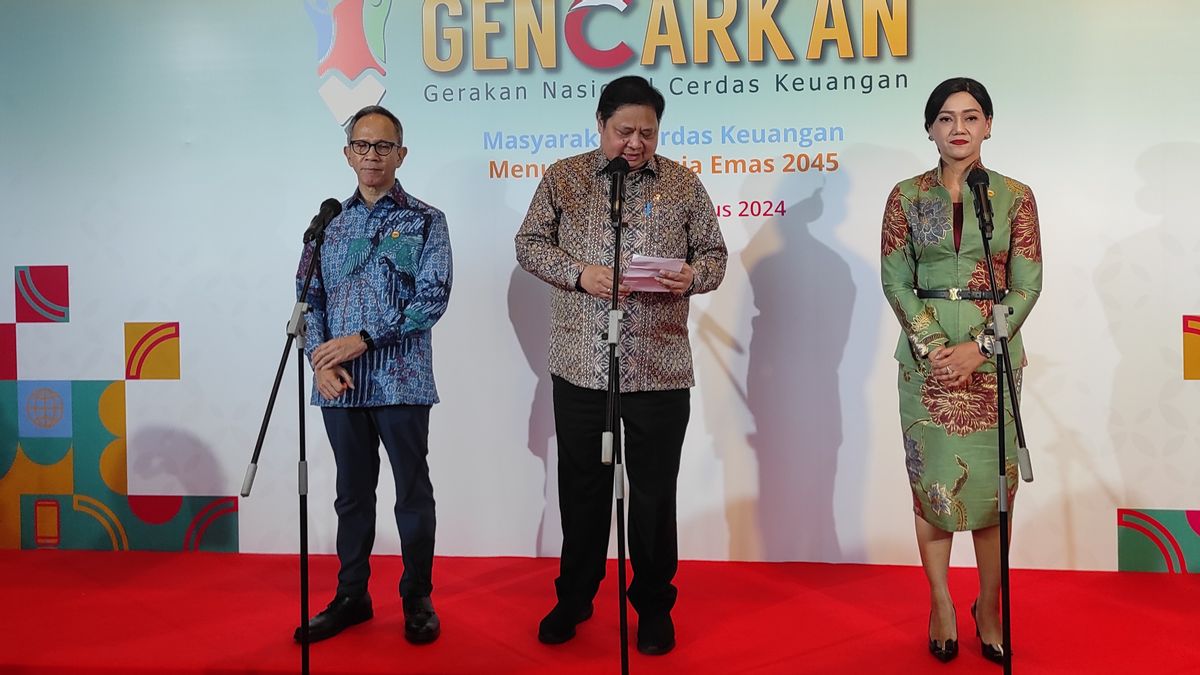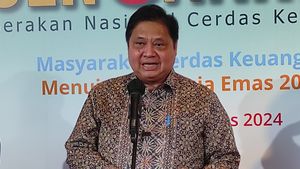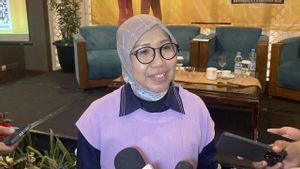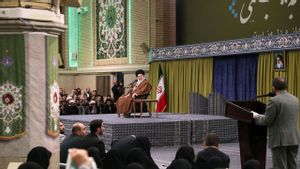Coordinating Minister for Economic Affairs Airlangga Hartarto explained that Indonesia's financial inclusion rate in 2024 could reach 90 percent.
Meanwhile, the data is different from the financial inclusion and literacy index released by the Financial Services Authority (OJK) at the financial inclusion rate of 75.02 percent.
Airlangga explained the difference in the level of financial inclusion recorded by OJK and the government because the indicators recorded in the survey to the public were different.
According to Airlangga, OJK only records supervised financial instruments. Meanwhile, the Coordinating Ministry for the Economy, a number of government programs such as the Family Hope Program (PKH) and pre-employment cards are considered to contain aspects of increasing financial inclusion.
"Actually, we entered other government program data, so I ask that in the future we put out data not only in the scope of the financial market. Including the government's social assistance program, some of which also use digital domains," said Airlangga at the Financial Smart National Movement event in Jakarta, Thursday, August 22.
In the event, Airlangga explained, the government also considered the government assistance program as an indicator of financial inclusion because the government assistance program was distributed entirely through digital wallets (e-wallet).
Airlangga conveyed that social protection protection programs such as PKH were distributed by more than 20 million participants, pre-employment cards, which were around 18 million participants, all of whom used e wallets.
In addition, there is a program receiving contribution assistance (PBI) in BPJS Kesehatan, Farmer Cards that reach around 9 million farmers, to the Indonesia Smart Card (KIP) Lecture which reaches more than 666 thousand students.
Airlangga added and calculated electronic certificates, Intellectual Property Rights certification (HAKI), to halal certificates that were considered to be used for the public to access formal finance.
The aspect is considered by Coordinating Minister Airlangga to be part of efforts to increase financial inclusion.
"So maybe these programs are what we encourage to become part of financial services through various services and various social assistance carried out by the government," he said.
Airlangga hopes that the survey at the level of Indonesian financial inclusion can be integrated thoroughly so that it can be one of the indicators as well.
"Maybe next year the survey can be integrated in its entirety so that thus the products surveyed are not only products that are in supervised or products under the OJK, but earlier what I mentioned was indeed the government's program to help financial inclusion," he concluded.
For information, OJK has released the National Survey of Financial Literacy and Inclusion (SNLIK) which shows the Indonesian population financial literacy index at 65.43 percent, and the financial inclusion index at 75.02 percent.
Responding to this, Member of the OJK Board of Commissioners for Education and Consumer Protection, Friderica Widyasari Dewi, said that in the future her party would include programs that had not been recorded in the survey conducted by the OJK.
SEE ALSO:
According to Friderica, this happened because the OJK was still focused on products and services supervised by his side.
Furthermore, Friderica said, Indonesia's financial literacy target next year is expected at 66 percent to 67 percent.
"We did have a target that was conveyed by the Coordinating Minister [Airlangga, in the future we will also include things that we have not included because we are still focused on the products and services that we monitor," said Friderica.
The English, Chinese, Japanese, Arabic, and French versions are automatically generated by the AI. So there may still be inaccuracies in translating, please always see Indonesian as our main language. (system supported by DigitalSiber.id)











